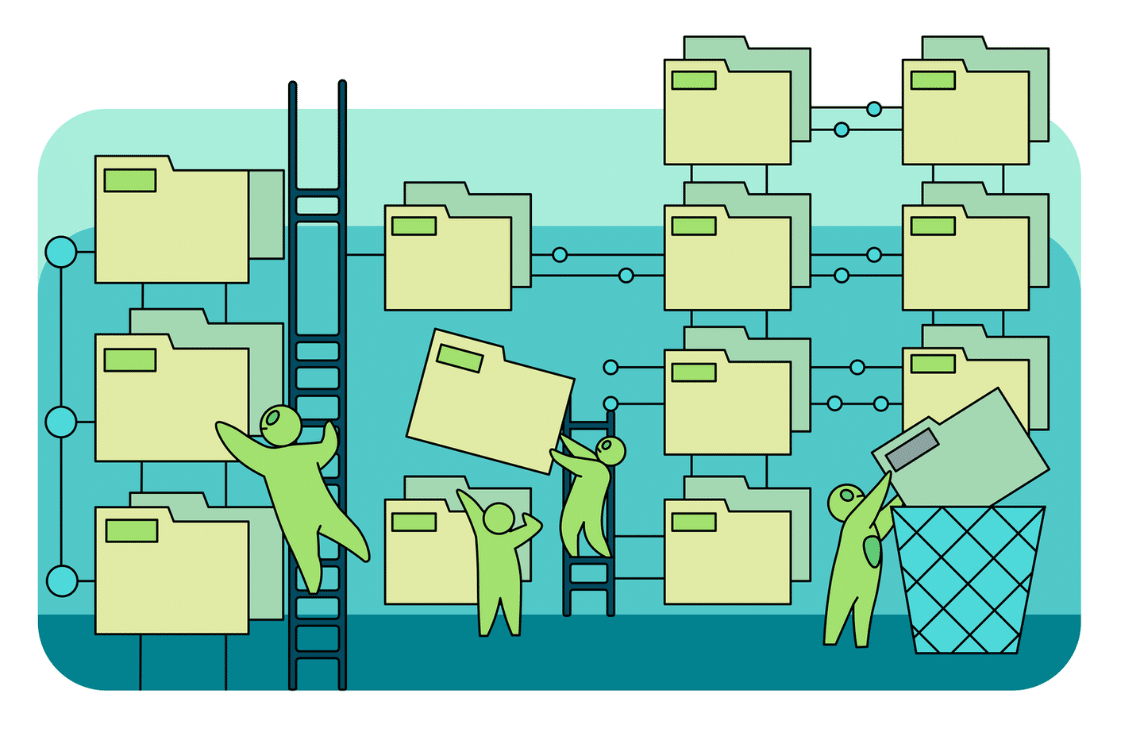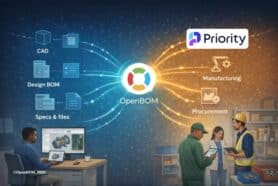
In today’s fast-paced and data-driven world, staying organized and managing information effectively is crucial for product development and manufacturing. The time when drawing blueprints and BOM was placed on the corkboard in the shop flow is over. Whether you’re working on a new design, planning the improvement of an existing product, or managing a team of manufacturing contractors, having access to accurate and up-to-date information such as CAD design, BOMs, cost, etc. is essential to making informed decisions and staying on track. However, with so much information to keep track of, it can be overwhelming to stay organized and make sense of it all. Talking to many manufacturing companies and engineering, I can see how these companies and teams are struggling to manage information efficiently.
Why is it hard to manage information?
As engineers, managing complex CAD files and Excel Bill of Materials (BOMs) can be a challenging task. The sheer volume of data, intricate designs, and frequent updates to designs and component specifications can quickly become overwhelming. However, having accurate and up-to-date design and product information including CAD data, product structures, BOMs, and purchasing data is critical to the success of any engineering project.
This is where we come in. Our team works with engineers to streamline their CAD file and BOM management processes, helping them to stay organized, reduce errors, and increase efficiency. Whether you are working on a small project or managing a large-scale engineering effort, we have the tools and expertise to help you stay on top of your data and get the job done right.
But here is the problem. The way we manage data in engineering and manufacturing didn’t change for a long time. We still rely on the age-old concept of files and folders, a paradigm that dates back to the early days of computing. Most CAD systems in production today are file-based and Excel is an unofficial lingua franca for many manufacturing businesses.
Therefore, in a world where information is changing so fast and companies are facing an unprecedented amount of challenges such as supply chain, cost, and competition, relying on file and folder systems is starting to show its limitations. This is why everyone speaks today about digital transformation. It’s time to rethink the way we manage our digital assets and embrace a new, more efficient way of organizing and accessing our information.
In this blog, we will explore how to switch from ages old folders/files paradigm to granular and connected data management principles.
Engineering Data Management Struggle Is Real
Engineers (mechanical, electrical, and electronic designers) are known for their ability to design and develop innovative products from the simplest machines to complex systems that run our world. However, the most talented engineers I met struggle with managing their files, and BOMs and organizing information for production planning, purchasing, and supply chain.
The challenge of modern PDM, PLM, and ERP systems is to help engineers and manufacturing companies to move away from outdated file spreadsheet-based mindsets and embrace modern ways to manage information. Looking at how engineers are exporting their CAD designs to BOM spreadsheets, manually working to create PDF files with drawings, and sending this information by email to everyone who needs this leaves me usually shockingly sad, to say the least. It is time to move from files to granular connected data and information lifecycle that will make your work more efficient and effective.
Here is how you can do it. In the following 5 steps, I outlined what needs to be done to escape bad data management habits and an old file/folder mindset.
Embrace a Data-Driven Mindset
The first step in embracing a connected data and information lifecycle is to adopt a data-driven mindset. This means recognizing that the focus should be on data and not on files. We are all familiar with Folders and Files, but these structures are hard to traverse and data hidden in files cannot be easily shared and managed. Removing “file envelope” from data will make data more transparent and organizations more efficient with their tasks. After all, it is important to talk about “design” (and not CAD files), “items and BOMs” (and not Excels), etc.
Implement a Centralized Distributed Data Repository
A centralized data repository is a key component of a connected data and information lifecycle. Therefore you need to start with the organization of such a repository in your organization.
Focus on data, items, and granular properties – this is what will help you to get data centralized and accessible for everyone.
Switching to a distributed data repository with centralized control capable to define who can see the data, when and what policies must be applied is a great start. This is a single location where all of your CAD data and BOMs are stored and can be accessed by authorized personnel.
Connect Pieces of Information to Support Digital Thread
Placing information in a centralized repository is only the first step. Next is to connect pieces of information so the semantic relationships between these data silos will be established. Drawings connected to items, sub-assemblies to parts, orders to BOMs, and POs to vendors. Think about all these pieces of information as a digital factory connecting all these data silos together. By doing so, we make information available to everyone who needs it.
Eliminate Manual Data Management Tasks
Nothing can introduce more mistakes than manual data entry and re-keying. Manufacturing companies are famous for moving data between systems in a manual way. It is so regular to see that companies lost track of their losses and keep hiring BOM clerks and not thinking often about how data organizations can allow them to hire engineers to build products faster.
From the very early days of OpenBOM, we focused on how to help mechanical engineers solve data management product easily and help them to think about better digital transformation strategies rather than copy files and excels to support business processes. Automating data extractions and transfers, automatical merge, and many other data management tasks are key to helping data flow from requirements to CAD, from CAD to BOM, and from BOM to purchasing planner. And, most importantly, to avoid mistakes.
Holistic Data Sharing
It’s important to empower your team to be a part of the connected data and information lifecycle. Instead of thinking about how to keep “all Excels that I need” on my USB stick, the focus should be on how to make data organized and connected and stop wrangling for data.
Everyone needs to get the data they need and provide them with the tools and training they need to manage to engineer and manufacture information effectively. When your team is involved in managing data, they are more likely to take ownership of it and make sure that it’s accurate, complete, and up-to-date. Opposite to, if everyone is fighting for how to protect their data, the company is not moving in the right direction.
Conclusion:
We built the OpenBOM platform to help engineers and manufacturers solve data management problems and use data to support engineering and manufacturing decisions. Moving away from a file-based mindset and embracing a connected data and information lifecycle will make your work as an engineer more efficient and effective. Embracing tools that can organize data, make it easily manageable and available to everyone, connect pieces of information, manage the lifecycle of changes, and automate data translation and exchange tasks, will allow you to focus on design and innovation, make fewer mistakes and save a lot of time and money.
REGISTER FOR FREE and check how OpenBOM can help you today.
Best, Oleg
Join our newsletter to receive a weekly portion of news, articles, and tips about OpenBOM and our community.










